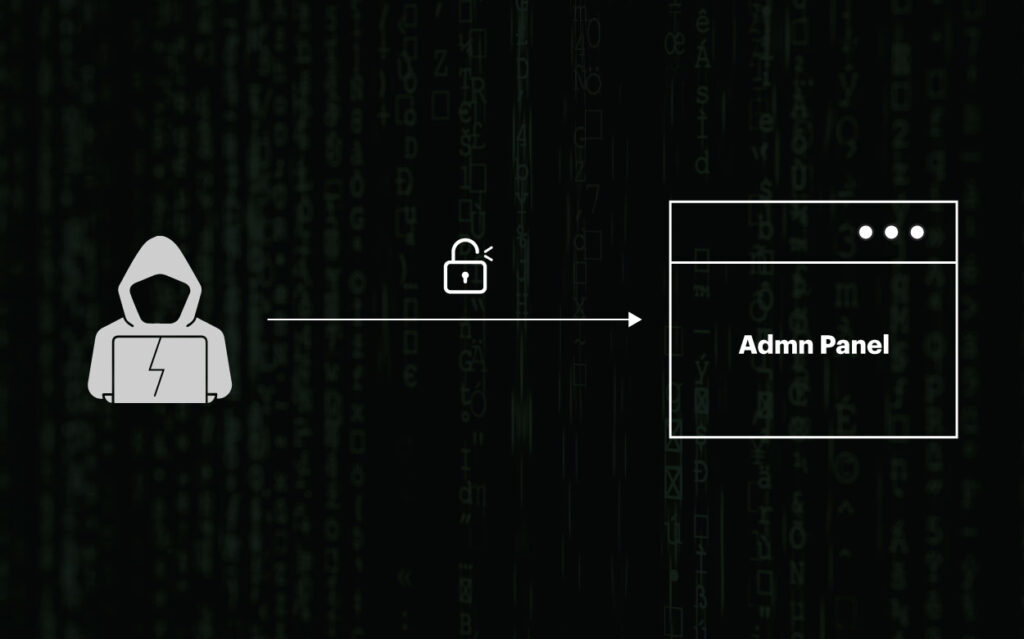Software vulnerabilities invite unauthorised exploitation and create risks for its users. In this digital era, vulnerabilities are as common as the software. Such vulnerabilities are like hidden potholes, creating dangerous weak spots. To protect your users from such hidden dangers, you need to look out for possible software vulnerabilities. Leaving out vulnerabilities in your software can severely damage your reputation as well as your business growth. The first step towards preventing vulnerabilities is learning the most common vulnerabilities in software. So let’s take a conceptual discourse with us on common software vulnerabilities. Stick with us as we discuss the proven paths to reduce software vulnerabilities and make your software a secure one.
What Is Software Vulnerability?
Software vulnerabilities are coding vulnerabilities that create an opportunity for the attacker to attack, exploit, and manipulate the system. Both system security & functionality can be compromised due to software vulnerabilities. However, each vulnerability has a varying level of threat and seriousness. Not all vulnerabilities can drive away your users or hurt your reputation at the same level.
Most Common Software Vulnerabilities & Ways to Address Them
Understanding the vulnerabilities can guide you and help you decide on measures to protect your users and your reputation. There are thousands of vulnerabilities lurking around. However, to address the most common vulnerabilities, we explained the top vulnerabilities from the OWASP list.
Checklist
1. Broken Access Control

Access control regulates the level of access a user has over a software or web application. Broken access control can lead to unauthorised access to critical web pages or data. It has been ranked first in the OWASP 2021’s Top 10 list. Broken access control can lead to unauthorised data manipulation, data leaks, modification, etc, and severely hurt the whole system.
There are several types of broken access that instigate varying levels of threats.
- Vertical Broken Access: Vertical access controls divide users into specific groups and maintain different levels of access among user groups. Broken access in vertical control can grant admin access to normal users.
- Horizontal Broken Access: Horizontal broken access creates an opportunity to access data of same-level users such as usage history, personal details, payment methods, etc.
- Contextual Broken Access: Context-based access regulates functionality based on the state of the interaction between the user and the system. For example, contextual broken access can allow a customer to change items in the cart even after making the payment.
2. Cryptographic Failures

‘Cryptographic failure’ or ‘sensitive data exposure’, no matter what name we use, cryptography primarily deals with the safety & security of our data and protects our privacy. Using different encryption algorithms, cryptography cyphers the data to prevent any unauthorised access. Such ciphered data can only be brought back to its original form using a cryptographic key. Now imagine using a weak key and losing all your bank balance to a random hacker in seconds. That’s how much threat a cryptographic failure can pose in 2024.
Common reasons behind cryptographic failures:
- Weak Algorithms: As algorithms work as the key to the data, using weak encryption algorithms severely increases the risk of data exposure.
- Protocol Flaws: Security protocols like SSL/TSL can have design flaws. For example, in 2014, the Heartbleed vulnerability created security issues for many of the OpenSSL users.
- Implementation Errors: Mistakes in implementing cryptographic algorithms or protocols can introduce vulnerabilities. These errors may include buffer overflows, integer overflows, or other programming mistakes that can be exploited by attackers.
3. Injection Vulnerability

The nature of injection vulnerability has a strong connection with its name. This is a type of software vulnerability where the attacker injects untrusted data and executes it as a code to manipulate the system. SQL injection is the most common type of injection vulnerability. However, there are a bunch of other injection vulnerabilities as well.
- Blind SQL Injection: By asking true-false questions using SQL statements through an error page, an attacker can gain control of the system and expose sensitive data.
- OS Commanding: The attacker injects an OS command to upload malicious programs or obtain data.
- SSI Injection: In this attack, the web server is used to execute the malicious code.
4. Insecure Design
Insecure design refers to the creation of software systems or components with fundamental flaws in their architecture or design. Developers cannot always maintain adherence to secure design principles to meet strict deadlines. These types of design flaws are hard to identify as they are fundamental to the software code. This can lead to significant damage in terms of functionality, security, as well as reputation.
For example, not setting limits for login attempts leaves the system vulnerable to brute-force attacks. Another real-life scenario can be drawn from the GPU market during the Bitcoin hike. Scalpers bought all the graphics cards to create an artificial shortage. A good e-commerce site should have the means to identify and prevent such malpractice.
There are many other threats such as bypassing authentication mechanisms, modifying URL parameters, and spoofing a system attributable to insecure design faults.
5. Security Misconfiguration
Security misconfiguration in software development refers to the improper setup or configuration of software components, or systems, leading to vulnerabilities and potential security breaches.
Security misconfiguration vulnerabilities rank 5th in the OWASP top 10. This can occur on any level of the system such as servers, network services, databases, storage etc. Security misconfiguration allows the attackers to bypass or exploit security measures. Usually, the most common security misconfiguration is caused by organisations keeping default configurations Given that the attackers already know the default configurations, it is fairly easy for them to gain unauthorised access.
There are multiple ways to exploit security misconfigurations such as insecure default settings, over-accessive controls, weak encryption algorithms etc.
6. Vulnerable and Outdated Components

Outdated software components are nothing new in the world of software. According to Cyber News, a whopping 47% of websites run on outdated software components. Vulnerable and outdated software components are usually third-party libraries or frameworks used which are no longer supported by their developers.
Outdated components do not receive any security updates or patches. This creates room for many vulnerabilities such as SQL injection, remote code execution etc. However, these vulnerabilities are usually known for days or months before being exploited. For example, the Australian Government Census website faced a hacking crisis in 2019 originating from an outdated third-party library.
The usual reasons behind vulnerabilities are:
- If you are unaware of the versions of all the components you are using.
- If the components are out of date and not supported by the developers.
- If you do conduct regular scans for vulnerabilities.
- If the updated components are not compatible.
How to Solve These Software Vulnerabilities?
Solving all these vulnerabilities can be a real pain. However, if you want a smooth, secure & safe app, you are bound to fix all these vulnerabilities threatening your system.
- Always stick to the principle of least privilege while giving access to your users. Blocking access by default is the key.
- Verifying user inputs is a must to protect your system from broken access as well as injection vulnerabilities.
- Before storing sensitive data, think twice. Unnecessarily storing sensitive data increases the risk of data leakage & lawsuits.
- Always use the latest security protocols. TLS 1.3 (Transport Layer Security) should be your new standard. Besides, hashing passwords is a more secure practice than encrypting.
- To prevent injection vulnerabilities, configure your web application to filter user inputs and look out for malicious codes.
- Restrict database code & database access to prevent unauthorised data access. Besides, keep databases patched and monitor communications.
- Remove unused and unnecessary features and components from your software.
- Securing default configurations is the first step to prevent misconfiguration. Besides, Depending less on third parties is often a good choice.
- To avoid outdated vulnerabilities, constantly monitor libraries & components and remove unsupported versions.
- Test, test & test! Testing your software codes is the best way to find out any vulnerabilities that they might have.
Concluding Remarks
Software development is very resource-intensive work. Developers often work under severe time constrain. To meet deadlines, security concerns are often neglected and vulnerabilities arise. That’s why constant and collective efforts have been made to identify the most common and dangerous vulnerabilities. Dealing with these known vulnerabilities can take up much time & resources. However, resolving these vulnerabilities can be the cornerstone of your long-term success. As prevention is always better than cure, identifying and solving common vulnerabilities before they bother users, is a more sustainable approach.
Frequently Asked Questions
What is OWASP Top 10?
OWASP stands for ‘Open Web Application Security Project’. OWASP Top 10 is a list of the most common software vulnerabilities based on OWASP surveys.
How many software vulnerabilities are there?
The highest number of software vulnerabilities was reported in 2023 to be 29,605.
How do software vulnerabilities occur?
Software vulnerabilities can occur due to programming errors, insecure coding practices, outdated software, or inadequate security measures.
Which is the most common software vulnerability?
Broken access control has been recognised as the most common software vulnerability by OWASP’s Top 10 list. More than 94% of applications have some sort of broken access control vulnerability.
What is a software vulnerability?
A software vulnerability is a flaw in code that allows attackers to manipulate or harm systems. These vulnerabilities can compromise security and functionality.
Why is broken access control dangerous?
Broken access control allows unauthorised users to access, edit, or misuse data. Fix access control by blocking default access and testing permissions.
What are cryptographic failures?
Cryptographic failures happen when weak encryption exposes sensitive data. Use strong encryption protocols and avoid storing unnecessary sensitive information.
How does injection vulnerability work?
Injection vulnerability occurs when attackers insert harmful code into programs. Prevent this by validating user inputs and filtering malicious data.
What is insecure design?
Insecure design means flaws in software architecture. It risks attacks. Use secure design principles and regularly review designs to strengthen systems.
Why are outdated components a risk?
Outdated components miss security patches, making systems vulnerable. Regularly update software and remove unsupported versions to ensure safety.
What is security misconfiguration?
Security misconfiguration occurs due to improper software setups. Secure defaults, minimise privileges, and test configurations to reduce risks.
How do you fix access vulnerabilities?
Limit user permissions. Use multi-factor authentication and default-deny policies to block unauthorised access to systems and sensitive data.
What are types of injection attacks?
Types include SQL injection and OS commanding. These attacks exploit poor input validation. Prevent attacks by validating and sanitising all inputs.
How does testing remove vulnerabilities?
Testing exposes bugs, weak points, and risks in software. Regular testing protects against security issues and ensures reliable performance.

